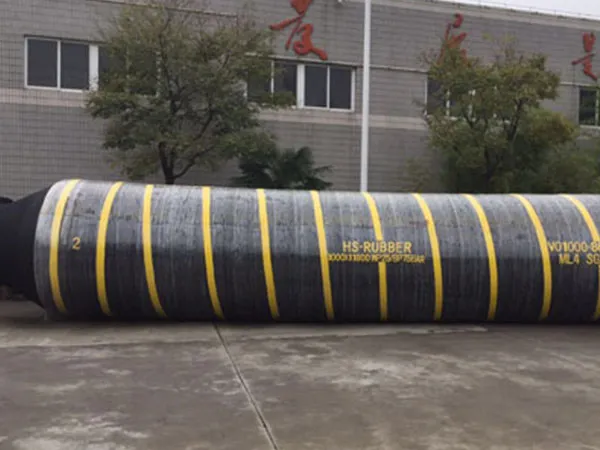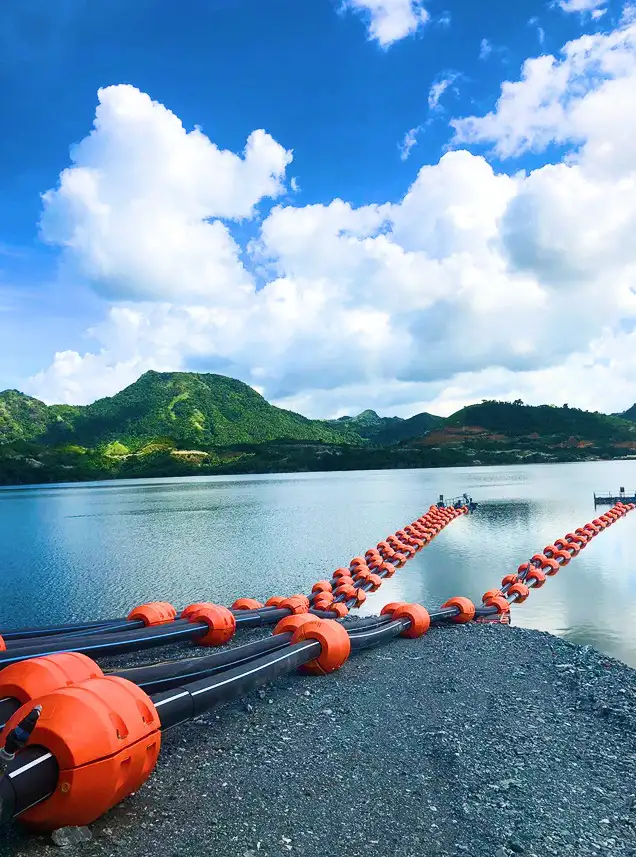
A marine pipe floating hose, often simply called a floating hose, is a specialized, heavy-duty flexible conduit designed to transport fluids (such as crude oil, refined products, slurries, or water) across the surface of the water. Its defining characteristic is its ability to remain buoyant, even when filled with a dense product, making it an essential component in marine and offshore operations.
Marine pipe floating hoses are specialized, flexible pipelines designed to remain buoyant on the water's surface while transferring various fluids or slurries. They are crucial components in a range of marine and offshore operations, providing a more adaptable and resilient alternative to traditional rigid piping systems.
Buoyancy: The defining feature of these hoses is their ability to float. This is achieved through integrated foam layers or external flotation collars made from materials like polyethylene or polyurethane. These buoyant elements distribute the hose's weight evenly, preventing it from sinking, even when filled with heavy fluids.
Reinforced Structure: Marine floating hoses are typically constructed with multiple layers of synthetic rubber, reinforced with high-tensile strength fabrics, spiral reinforcements, and often steel wire. This robust construction allows them to withstand high pressures, abrasive materials, and the dynamic forces of marine environments (waves, currents).
Durability and Resistance: The outer layer is designed to be highly resistant to abrasion, oil, seawater, and UV radiation, ensuring a long service life in harsh conditions. Inner layers are often made of synthetic rubber compounds specifically chosen for their resistance to the type of fluid being transferred (e.g., crude oil, chemicals, slurries).
Flexibility: Despite their robust construction, these hoses are engineered to be highly flexible, allowing them to adapt to water surface movements without kinking or breaking. This flexibility is vital for continuous operation in dynamic marine settings.
Single Carcass: Consists of one main layer for fluid transfer and reinforcement.
Double Carcass: Features two independent layers (an inner and an outer carcass). This design offers enhanced safety and environmental protection. If the inner layer is compromised, the secondary layer can prevent leakage, and some systems include warning mechanisms to alert operators of a breach.
Marine pipe floating hoses are deployed on the water's surface, connecting a fluid source (e.g., a dredger, offshore platform, or vessel) to a discharge point (e.g., another vessel, shore facility, or disposal area). Their integrated buoyancy keeps them afloat, preventing them from sinking, getting entangled, or suffering abrasion from the seabed. This allows for efficient and continuous transfer of materials, even in challenging conditions.
Applications:
Marine pipe floating hoses are indispensable in various industries, including:
Oil and Gas: Transferring crude oil, refined fuels, and drilling fluids between offshore platforms, floating production storage and offloading (FPSO) units, and transport vessels. They are particularly common in Single Point Mooring (SPM) systems.
Dredging: Essential for transporting sediment, slurry, and water from dredgers to disposal sites or processing facilities during land reclamation, harbor maintenance, and river restoration projects.
Mining: Used in subsea mining operations for the transfer of slurries and tailings.
Environmental Management: Employed in spill response for oil suction and transfer, and in various environmental projects for safe material and water transfer.
Marine Construction: Supporting pipelines and cables during installation and maintenance of underwater infrastructure.
Key Applications Include:
Oil & Gas Industry: The most common application. Floating hoses are used in Single Point Mooring (SPM) and Conventional Buoy Mooring (CBM) systems to load and unload crude oil and other petroleum products between offshore terminals/platforms and tankers.
Dredging Operations: Used to transport dredged slurry (a mix of sand, silt, gravel, and water) from a dredger to a reclamation site or a discharge barge. These hoses are built to withstand highly abrasive materials.
Mining Operations: For transporting mine tailings or slurries from processing plants to disposal ponds or for loading onto vessels.
Water Transfer: In large-scale projects, they can be used for the intake or discharge of cooling water for power plants or for desalination plants.
Floating hoses are categorized primarily by their application, which dictates their construction:
Floating Oil Hoses: Designed specifically for hydrocarbons. They must comply with the strict standards set by the Oil Companies International Marine Forum (OCIMF). They are further divided into types for different positions in a hose string (e.g., tanker rail hose, main floating hose).
Floating Dredging Hoses: Characterized by an extremely thick, abrasion-resistant inner liner to handle sand, rock, and coral. They are often equipped with enlarged, robust flanges to handle high mechanical loads.
Tailing Hoses: Similar to dredging hoses but designed for the specific chemical and physical properties of mine tailings.
In essence, marine pipe floating hoses are critical engineering solutions that enable the efficient, safe, and environmentally responsible transfer of liquids and slurries across water bodies, playing a vital role in global energy, infrastructure, and environmental sectors.
